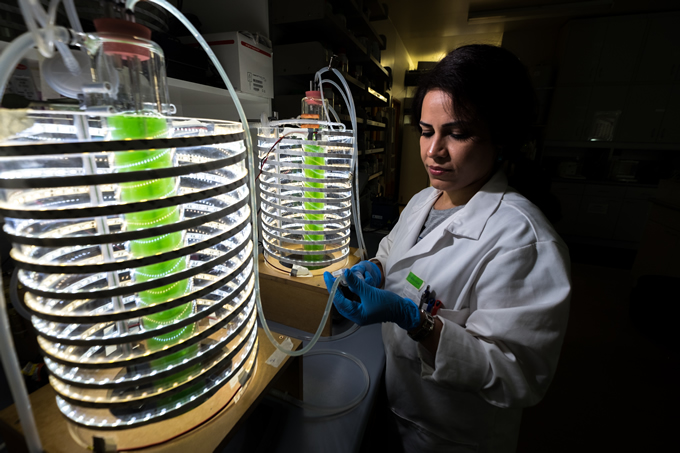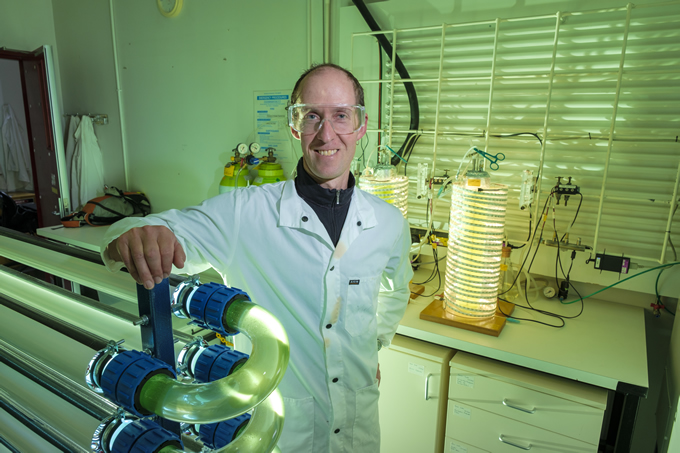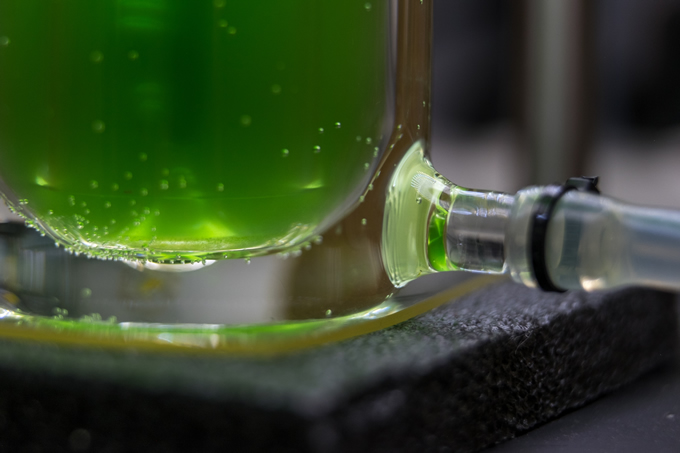Could algae be the next source of omega-3?
Are algae the next superfood? New algal source of omega-3s goes under the spotlight to find out.
An alga with high levels of EPA (Eicosapentaenoic acid) is being tested and grown to see if it could become a new source of omega-3-rich superfood.
Omega-3 fatty acids such as EPA provide great health benefits to the human cardiovascular system, nervous system, and anti-inflammatory reactions in the immune system.
Fish oil is currently the most common method by which humans can consume omega-3 fatty acids, but fish don’t actually produce omega-3s - they ingest the EPA through algae.
Now Manaaki Whenua – Landcare Research’s Dr Phil Novis and University of Canterbury PhD student Mehrnoush Tangestani are getting straight to the source and testing a promising new strain of algae discovered in a Southland wetland that contains naturally high levels of EPA. If successful, the algae could become a New Zealand-sourced alternative to the health supplement fish oil, and fish oil is a 450 million-dollar industry.

“The omega-3 fatty acids that fish accumulate come from algae in the first place, so it makes sense to look at algae as an alternative source, but to do that we have to boost yields, and the only way to do that is through technology,” says Dr Novis.
The pair are testing the effect of environmental growth variables such as light quality, pH, temperature, and CO2 concentration on the yield of EPA from a strain of the alga in the hope of developing a commercially viable method to boost EPA levels.
Algae needs light to grow, and technology such as a photobioreactor with LED lights is being used to create artificial light and mix the culture and so that light, nutrients, and gases can be taken up by the cells as fast as possible to optimise the growth rate.
“While you can grow yeast without light in a large container with a stirrer, most algae need light – but if you have algae in a large container the cells will self-shade when the culture becomes dense, meaning those cells in the middle won’t be getting any light,” Dr Novis explains.

“The photobioreactor is essentially a series of glass tubes through which a culture is circulated. Mixing takes place through the injection of gas, and light is provided by LEDs surrounding the tubes,” he adds.
By this method the pair have successfully grown and harvested algae in four one-litre bioreactors.
The next stage of the project is to scale production to 80 litres. To do this the pair are attempting to grow the algae in a series of snake-like tubes.
If successful with 80 litres, the next milestone is 1000 litres, which will bring them a step closer to volumes needed at a commercial scale.

The study is funded by the Science for Technological Innovation National Science Challenge and Manaaki Whenua – Landcare Research. It involves the University of Canterbury and Ngāi Tahu.
